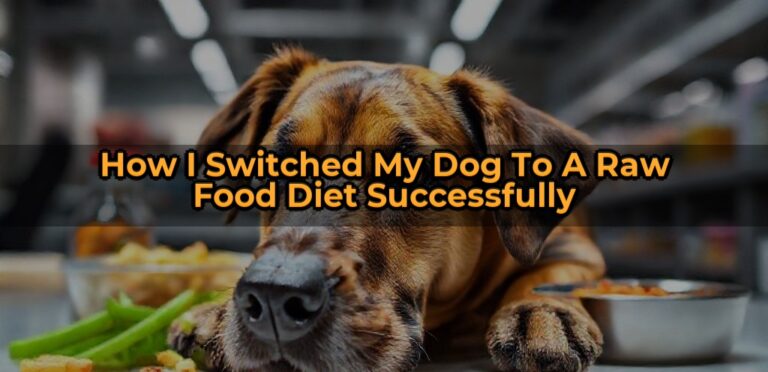Budget-Friendly Pet Food Options That Don’t Compromise Quality
Ever watched your dog gobble up a bowl of kibble and thought, “There’s gotta be something better than this for my wallet and my pup”? I’ve been there. On a tight budget but still wanting to give my pets food they thrive on, not just survive. It’s a balancing act, and honestly, I’ve learned a lot from trial, error, and a few mistakes along the way. Here’s the thing: feeding our animals well doesn’t have to melt down the bank—especially if we know what to look for and where to find it.
Why Budget-Friendly Can Be Healthy, Not Harmful
Challenging the myths
Many pet owners assume affordability automatically equals lower quality. That’s a myth I busted early on. I found some brands that pack a punch in nutrition but don’t charge a fortune. The trick is understanding what makes pet food high-quality. You want to see real meat, whole grains or vegetables, and minimal fillers or artificial ingredients. Those are the basics I look for—and surprisingly, they don’t cost a lot if you know where to look.
What truly impacts quality?
- Ingredient transparency: Clear labels aren’t just trendy; they tell you what you’re feeding. Look for named protein sources like chicken, beef, or salmon, not vague terms like “meat meal.”
- Nutritional adequacy: It needs to meet standards set by AAFCO (Association of American Feed Control Officials). Check for a statement on the packaging confirming it’s complete and balanced for your pet’s life stage.
- Processing methods: Minimal processing preserves nutrients. Some brands use dehydration or cold-pressing—these techniques retain more of the natural goodness.
- American Journey: Available at Chewy, this brand combines good ingredients with an affordable price point. I found their salmon & sweet potato formula keeps my dog’s coat shiny and stool firm.
- Rachael Ray Nutrish: It’s not gourmet, but it hits the right nutritional notes and uses real meat as the first ingredient. Plus, it’s usually on sale or available in larger bags at lower price per pound.
- Instinct by Nature’s Variety: Mainly known for grain-free options, I found their products balance cost and quality, especially when buying in bulk.
- Ingredients linked to meat sources, not by-products or fillers
- Component analysis aligning with your pet’s health needs
- Positive reviews from other pet owners with similar budgets
- Buy in bulk: Larger bags are usually cheaper per pound and reduce the constant shopping trips.
- Store sales & coupons: Always keep an eye out for discounts on premium brands or sales on store-brand options.
- Rotate protein sources: Switching between chicken, fish, beef, and turkey keeps things interesting and can sometimes reduce costs.
- Watch for expiration dates: Buying too far ahead risks waste—balance your stash based on your pet’s consumption rate.
- Join online communities: Pet owner groups often share tips on where to find deals and reliable brands on a budget.
How to Pick Smarter, Budget-Friendly Options
Focus on value, not just price
Skimping on food quality to save a few bucks can backfire. Poor nutrition leads to vet bills and health issues that cost way more than a slightly pricier bag now. So, I always weigh the cost against nutritional value. Sometimes, buying in bulk or larger bags reduces the per-serving price and ensures consistency.
Read the label, then look beyond it
Pro tip: I’ve found that brands with straightforward labels—no long strings of obscure ingredients—are more trustworthy. Look for familiar ingredients; if you see a list packed with fillers like corn or soy, I pass. My experience shows that animals tend to do better on diets closer to their ancestral foods.
Shop smarter—online and subscription services
I shifted some of my buying to online stores and subscription services. They often offer discounts for regular shipments. Plus, Amazon, Chewy, and Petco sometimes run flash deals that make premium brands accessible. Signing up for these discounts paid off because I discovered some brands I’d previously overlooked due to sticker shock.
Brands That Offer Real Value Without Cutting Corners
Store brands and private labels
Many big-box stores have their own lines that are surprisingly good. For example, Walmart’s Ol’ Roy and Target’s Good & Gather both feature formulas with decent ingredients at a fraction of boutique brands. It took me some experimentation, but I found that the store brands often match or outperform pricier options.
Mid-tier brands with strong reputations
High-quality, lower-priced options: what to watch for
Don’t get lured in by marketing gimmicks or expensive packaging. Instead, focus on what really matters:
DIY and Homemade Options—Can They Save Money?
My experience
At one point, I experimented with homemade dog food. Initially, I thought it would be cheaper—buying bulk ingredients like rice, chicken, carrots, and eggs. But as I delved deeper, I realized the hidden costs—time, effort, and the risk of unbalanced nutrition. Plus, the expense of supplements needed to meet all dietary needs added up fast.
Taking the middle ground
What’s worked better for me is supplementing high-quality commercial food with homemade toppers. For example, adding cooked vegetables or a bit of canned fish not only adds flavor but boosts nutrition without breaking the bank. This offers the best of both worlds: control, cost savings, and guaranteed nutritional balance, checked against veterinary recommendations.
Tips for Maintaining a Budget-Friendly, Healthy Diet
My Final Takeaways—Part 1
Great pet food doesn’t have to mean an empty wallet. It’s about knowing what to look for, making smart choices, and being willing to swap brands or buy in bulk. From store brands to mid-tier options, there’s a wealth of quality choices out there that won’t drain your bank account. Plus, the added bonus? Your pet will thank you with a shiny coat, steady energy, and fewer visits to the vet. But I’ll leave you hanging here—there’s more to uncover about specific food tactics and how to decode labels in Part 2. Trust me, it’s a game-changer.

groups often share tips on where to find deals and reliable brands on a budget.M…

After section: My Final Takeaways—Part 1
Decoding Labels and Finding Hidden Gems
Most pet parents scoff at feeding their furry friends the cheapest options, but the truth is, labels can be tricky. Reading between the lines reveals a lot—or a little, depending on how you interpret the information. To get the best bang for your buck, you need to become a label whisperer. That starts with understanding the language companies use and recognizing what’s really important.
Look beyond flashy packaging and marketing claims. Terms like “premium,” “natural,” or “holistic” are often marketing fluff without regulation backing. Instead, zero in on the ingredient list. You want to see real meat or fish listed as the primary ingredient—preferably named, like “chicken,” “salmon,” or “lamb”—not vague terms such as “meat meal” or “animal by-products.” These ingredients are concentrated sources of protein, and their position at the top of the list signals the food’s primary content and quality.
Pay attention to the order of ingredients. If grains like corn or wheat appear early, it could mean your pet’s diet is more carb-heavy than protein-rich. While carbs aren’t inherently bad—dogs, especially, can handle some—they shouldn’t take up the majority of the ingredient list. Vegan or vegetarian pet foods, for example, often treat plant-based proteins as primary ingredients; whether that’s suitable depends on your pet’s specific needs.
Next, check for added fillers, artificial preservatives, and colorings. These often bump up the cost without adding nutritional value. The fewer artificial additives, the better your chances of avoiding food sensitivities or long-term health issues. Keep an eye out for natural preservatives like mixed tocopherols (vitamin E) rather than chemical ones such as BHA, BHT, or ethoxyquin.
Case Study: The Secret Power of Bulk and Store Brands
Take a popular mid-range store brand known for its surprising quality scores—many pet owners dismiss these without a second thought. But a quick comparison reveals a similar core ingredient list and nutrient profile to nationally branded products costing twice as much. Buying in bulk from these brands can make a significant difference—sometimes slashing the overall cost by 30-50%. When shopping this way, make sure to check expiration dates, store their unopened bags in a cool, dry place, and keep an eye out for any recalls.
Case in point: I personally switched my Labrador to a store-brand formula with high-quality ingredients, and the difference was noticeable. She has more energy, a shiny coat, and fewer digestive issues. The key? Matching her specific nutritional needs with a formula that’s affordable but not sacrificing quality. This approach isn’t just about saving money but optimizing for health.
Leveraging Subscription Services and Sales
Subscription plans for pet food are game-changers. They often come with steep discounts, free shipping, and the added convenience of never running out of your pet’s staple. Many brands offer loyalty programs, letting you accumulate points or unlock discounts for repeated purchases.
Similarly, keep an eye on sales—particularly during seasonal resets when stores move stock. Stocking up on your preferred brands during these periods can lead to substantial savings. If you’re brand-loyal or willing to experiment, this tactic often yields the best results. Don’t forget that many online retailers also offer subscribe-and-save options, sometimes with free samples or trial sizes to test new formulas before committing.

your preferred brands during these periods can lead to substantial savings. If y…
Homemade and Raw Diets: A Cost-Effective, Quality-Driven Alternative?
When done carefully, preparing homemade meals or raw diets can drastically cut costs—especially for larger animals—and give you complete control over ingredients. Start small, replacing a portion of commercial feed with cooked meats, rice, and vegetables your pet tolerates. Over time, you can expand to full homemade diets, but always consult with a vet or pet nutritionist first. Improper mixing can lead to deficiencies, so this isn’t a shortcut to nutritional excellence but an option worth exploring with proper guidance.
Some pet owners find that supplementing homemade diets with cost-effective, high-quality products balances nutritional gaps without breaking the bank. Remember, a well-formulated homemade diet takes some planning but pays off in health and savings.
Smart Purchasing Tips for the Savvy Pet Owner
- Buy in Bulk: Larger bags often translate into lower per-serving costs. Just ensure your pet finishes the bag before expiration or spoilage.
- Rotate Brands and Proteins: Not only keeps your pet engaged with variety but allows you to capitalize on sale items and discounts for different formulas.
- Use Online Forums and Apps: Communities like Reddit or specialized pet forums can provide insider tips, recommended brands, and timely sale alerts.
- Understand Your Pet’s Needs: A small, active dog may do well on a different formula than a large senior. Tailor your purchases accordingly to avoid waste or unnecessary expenses.
Research and Testing: Avoiding the Trap of Impulse Buying
Before committing to a new brand, read reviews, check independent testing results, and consider a small trial run. Your pet’s digestion, energy, and coat condition provide honest feedback. Keep a journal for a couple of weeks to track how the switch impacts their health. This personal data can save you money by preventing repeated costly failures.
Conclusion
Stretching your pet food budget without sacrificing quality is entirely feasible once you know how to navigate ingredients, labels, and shopping strategies. Focus on ingredient clarity, prioritize store brands with strong reputations, leverage discounts, and consider homemade options when appropriate. Don’t forget: each pet is different—what works for a lively terrier might not suit a laid-back bulldog.
Ask yourself what your pet truly needs—can you match those needs with smarter choices? When you start decoding labels and shopping strategically, you’ll find that quality really doesn’t have to come with a premium price tag. Looking for more tips or tailored advice? Dive into specific pet profiles, or share your experiences—together, we’ll find the best, most affordable diet for your furry friend.





